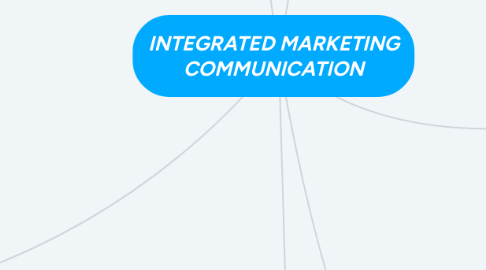
1. IMC is a strategic business process used to plan, develop, execute and evaluate coordinated, measurable, persuasive brand communication programs with consumers, customers, prospects employees and other relevant external and internal audiences.
1.1. ■ Identify the target audience ■ Recognize all contact points where the target audience may encounter the company and its brands ■ Assess the influence each of these contact points will have at different stages of the buying process ■ Tie together all of the company’s messages and images (same message, look, and feel) ■ Deliver a clear, consistent, and compelling message about the organization and its brands
2. Developing Effective Marketing Communication
2.1. 1. Identify the target audience
2.1.1. awareness, knowledge, liking, preference,
2.1.2. conviction, and purchase
2.2. 2. Set communication objectives
2.2.1. Message Content
2.2.2. Message Structure
2.2.3. Message Format
2.3. 3. Design a message.
2.4. 4. Choose the media through which to send the message
2.4.1. Personal communication channels i. Word of mouth ii. Buzz marketing
2.4.2. Non-personal communication channels i. Major media ii Atmospheres iii. Events
2.5. 5. Choose the message source.
2.6. 6. Collect feedback
2.6.1. Research the effect on the target audience.
2.6.2. Measure behavior resulting from the message
3. Setting the Total Promotion Budget and Mix
3.1. Setting the Total Promotion Budget
3.1.1. Affordable budget method sets the budget at an affordable level .Ignores the effects of promotion on sales.
3.1.2. Percentage-of-sales method sets the budget at a certain percentage of current or forecasted sales or unit sales price • Easy to use and helps management think about the relationship between promotion, selling price, and profit per unit • Wrongly views sales as the cause rather than the result of promotion
3.1.3. Competitive-parity method sets the budget to match competitor outlays • Represents industry standards • Avoids promotion wars
3.1.4. Objective-and-task method sets the budget based on what the firm wants to accomplish with promotion and includes: • Defining promotion objectives • Determining tasks to achieve the objectives • Estimating costs
3.2. Shaping the Overall Promotion Mix
3.2.1. Advertising reaches masses of geographically dispersed buyers at a low cost per exposure, and it enables the seller to repeat a message many times
3.2.2. Personal selling is the most effective method at certain stages of the buying process, particularly in building buyers’ preferences, convictions, actions, and developing customer relationships
3.2.3. Sales promotion includes coupons, contests, cents-off deals, and premiums that attract consumer attention and offer strong incentives to purchase, and can be used to dramatize product offers and to boost sagging sales
3.2.4. Public relations is a very believable form of promotion that includes news stories, features, sponsorships, and events
3.2.5. Direct marketing is a non-public, immediate, customized, and interactive promotional tool that includes direct mail, catalogs, telemarketing, and online marketing
4. Basic Elements of the Promotional Mix
4.1. Advertising
4.1.1. Any paid form of non-personal presentation and promotion of ideas, goods, or services by an identified sponsor.
4.2. Direct Marketing
4.2.1. Direct connections with carefully targeted individual consumers to both obtain an immediate response and cultivate lasting customer relationships—the use of direct mail, the telephone, direct-response television, email, the Internet, and other tools to communicate directly with specific consumers
4.3. Sales Promotion
4.3.1. Short-term incentives to encourage the purchase or sale of a product or service.
4.4. Publicity/Public Relations
4.4.1. Building good relations with the company’s various publics by obtaining favorable publicity, building up a good corporate image, and handling or heading off unfavorable rumors, stories, and events
4.5. Personal Selling
4.5.1. Personal presentation by the firm’s sales force for the purpose of making sales and building customer relationships
5. A view of the communication process
5.1. Refers to a series of actions or steps taken in order to successfully communicate
5.2. Components that enable the transmission of a message
5.2.1. Sender: The party sending the message to another party
5.2.2. Encoding: The process of putting thought into symbolic form
5.2.3. Message: The set of symbols that the sender transmits
5.2.4. Media: The communication channels
5.2.5. Decoding: The process the receiver assigns meaning to the message
5.2.6. Receiver: The party receiving the message
5.2.7. Response: The reactions of the receiver
5.2.8. Feedback: The part of the receiver’s response communicated back t
5.2.9. Noise: The unplanned static or distortion during the communication process
